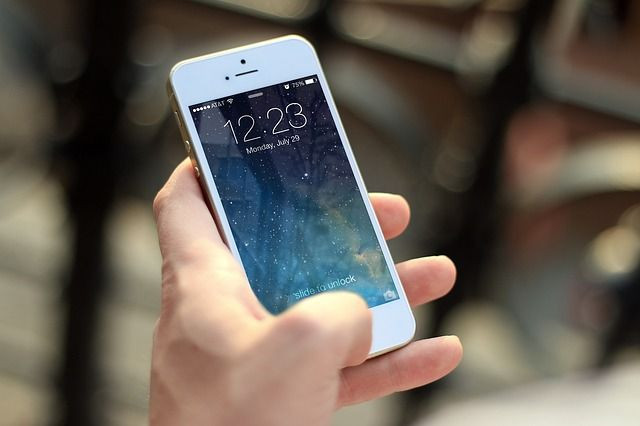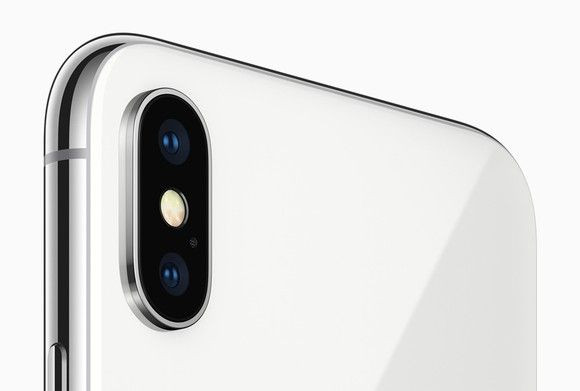Has The Apple Inc. iPhone X Been A Success In The US?

This article originally appeared in the Motley Fool.
Research firm Consumer Intelligence Research Partners (CIRP) recently published a research report (via MacRumors) showing the proportion of each Apple (NASDAQ:AAPL) iPhone model sold in the United States during the quarter ending in December 2017.
Here's the breakdown:
- iPhone 8 -- 24%.
- iPhone 8 Plus -- 17%.
- iPhone X -- 20%.
- All other iPhones (iPhone SE, iPhone 6s-series, iPhone 7-series) -- 39%.

The iPhone X was the second-most-popular model in the United States after the standard iPhone 8. The iPhone 8 Plus was the least popular of the trio, though it still commanded a respectable amount of iPhone-sales share in the region.
The question that's worth asking, then, is the following: Is the iPhone X a success in the United States?
8 Plus And X Combine To Overshadow iPhone 7 Plus
None of the three new iPhones achieved the sales proportion in the quarter ending in December 2017 that either of Apple's prior flagship phones (iPhone 7 and iPhone 7 Plus) achieved in the quarter ending in December of 2016.
However, if we look at the combination of the iPhone 8 Plus -- which comes in at roughly the same price point as last year's iPhone 7 Plus -- and the iPhone X -- which starts at a higher price point than where the iPhone 7 Plus topped out -- we see that those two models combined surpassed the iPhone sales proportion of the iPhone 7 Plus last year.
Assuming that iPhone shipments in the United States were at least flat year over year in the quarter ending in December of 2017, then the higher proportion of combined iPhone 8 Plus and iPhone X sales would've led to a boost in Apple's iPhone average selling prices year over year.
In that sense, the iPhone X is a smash hit for Apple, as it likely allowed for a year-over-year increase in iPhone average selling prices in the region, all else being equal.
All Else Isn't Equal, Though
Something that's worth pointing out is that, if we look at the sales proportion of Apple's iPhone 8, iPhone 8 Plus, and iPhone X combined during the quarter ending in December of 2017, it's actually quite a bit lower than that of the combined sales proportion of the iPhone 7 and iPhone 7 Plus in the same period a year ago.
Put another way, a larger percentage of Apple's iPhone sales in the quarter ending in December of 2017 came from older-generation models than was the case in the quarter ending in December of 2016.
A while back, there was some speculation that many iPhone buyers in the United States were opting for the iPhone 7-series devices instead of the iPhone 8-series devices because of the high degree of similarity between the two devices in terms of appearance and functionality.
The data here suggests that consumers prefer the newer iPhone 8 and iPhone 8 Plus over their discounted predecessors, but it's also clear from the data that the discounted iPhone 7 and iPhone 7 Plus devices fared better in the quarter ending in December 2017 than the iPhone 6s and iPhone 6s Plus did in the quarter ending in December 2016.
I think this makes sense, especially as the iPhone 7 and iPhone 7 Plus were dramatically better phones than the iPhone 6s and iPhone 6s Plus, respectively, while the iPhone 8 and iPhone 8 Plus don't offer as big a technology/feature leap.
The increased popularity of older, discounted iPhones in the quarter ending on December 2017 compared to the year-ago quarter could potentially offset the positive average-selling-price news that the iPhone 8 Plus and iPhone X combination seemed to bring.
We'll know more when Apple reports its financial results on February 1.
10 Stocks We Like Better Than Apple
When investing geniuses David and Tom Gardner have a stock tip, it can pay to listen. After all, the newsletter they have run for over a decade, Motley Fool Stock Advisor, has tripled the market.*
David and Tom just revealed what they believe are the ten best stocks for investors to buy right now… and Apple wasn't one of them! That's right -- they think these 10 stocks are even better buys.
Ashraf Eassa has no position in any of the stocks mentioned. The Motley Fool owns shares of and recommends Apple. The Motley Fool has the following options: long January 2020 $150 calls on Apple and short January 2020 $155 calls on Apple. The Motley Fool has a disclosure policy.





















